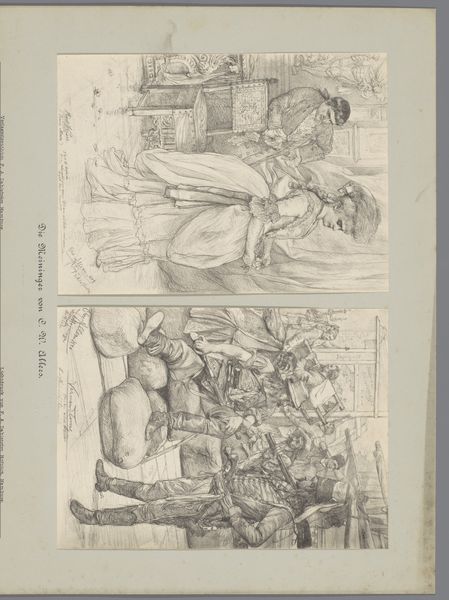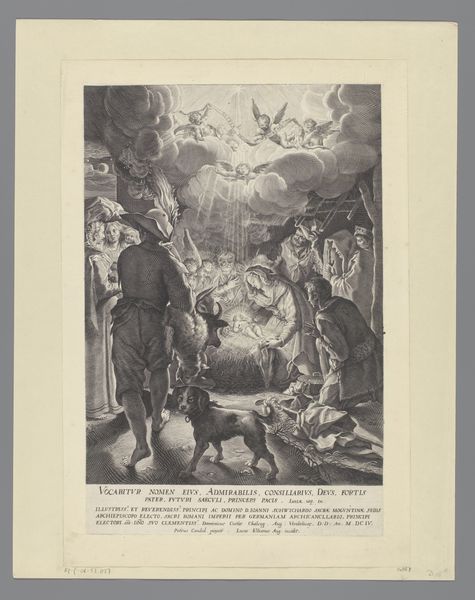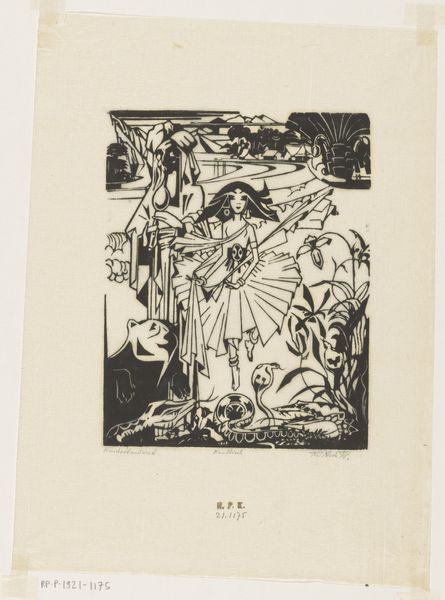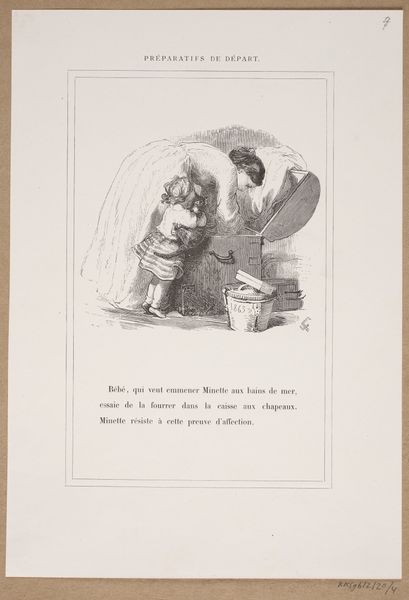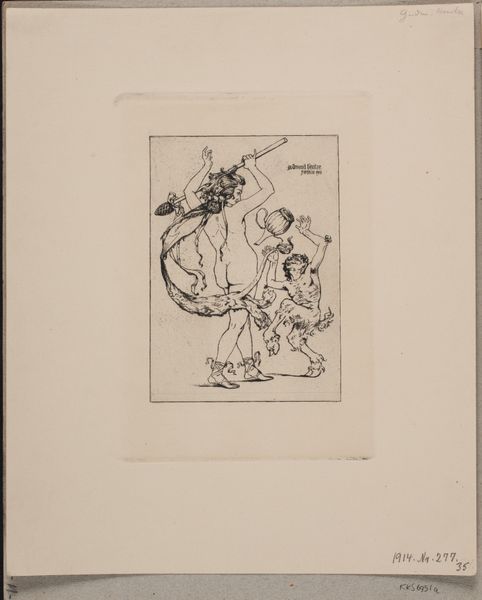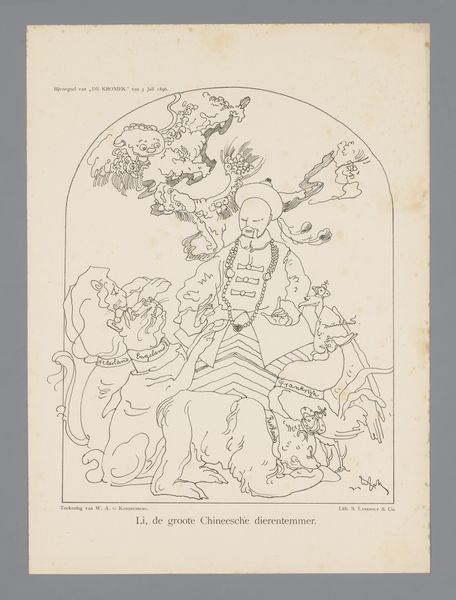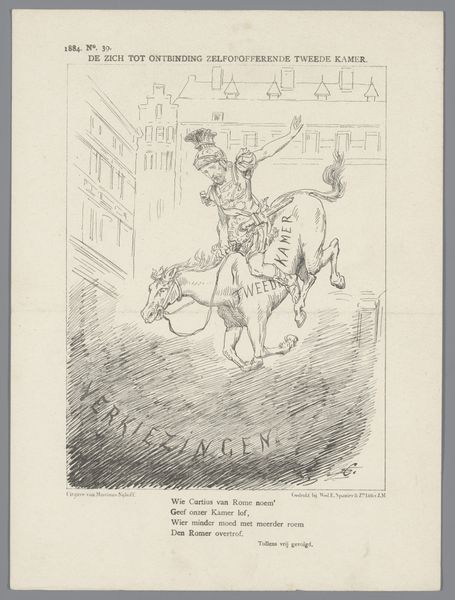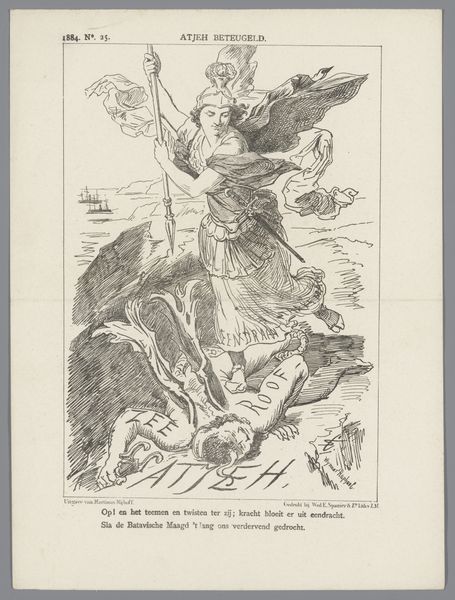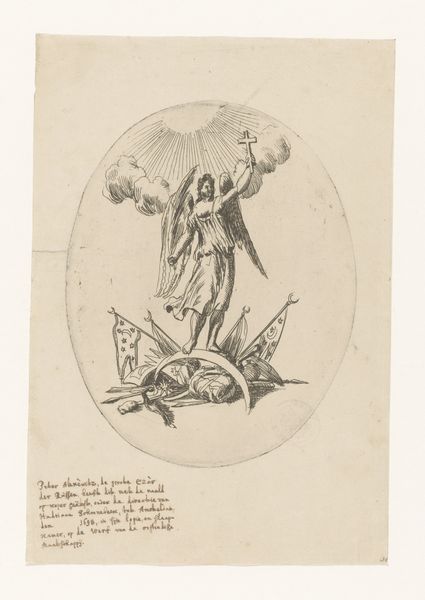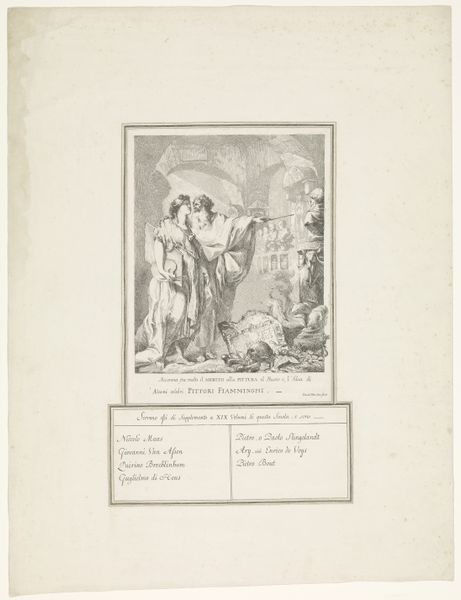
Dimensions: height 275 mm, width 215 mm
Copyright: Rijks Museum: Open Domain
Editor: This print, titled "Spotprent op de verkiezingen, 1888," which translates to "Cartoon on the elections, 1888," is by Johan Michaël Schmidt Crans, rendered in ink on paper using woodcut. I find its style quite intriguing, especially its clear orientalist influences. What can you tell me about its socio-political commentary? Curator: Given the overt Japanese influence and the date, 1888, this print screams cultural and political commentary! European fascination with Japan, a phenomenon we call Japonism, was at its peak. But beyond the aesthetic, the use of Japanese imagery – the Mikado reference, the figure's clothing, the setting – likely served as a way to critique or satirize Dutch politics at the time. How do you think the Dutch voters would interpret this caricature? Editor: Well, without knowing the specific political climate, it’s difficult to say definitively. But the sword implies a strong and perhaps authoritarian figure, while the fan and elaborate dress could be seen as frivolous. I suppose the poem underneath could add clues to this meaning too. Curator: Exactly! Political cartoons were often laden with symbolism that needed unpacking in the context of contemporary issues. Crans used “oriental” figures to symbolize leaders and political ideas, prompting questions about power, foreign influence, and even anxieties about Dutch identity itself. This challenges the typical understanding of art’s value for art’s sake. Editor: So, understanding the artwork requires understanding not only art history but also political and cultural history. I see how museums can highlight the way these intersect and are very valuable to know. Thanks! Curator: Precisely. This artwork makes me consider art's role in creating dialogue. Considering art as evidence of how imagery can shape public perceptions makes art museums a valuable resource.
Comments
No comments
Be the first to comment and join the conversation on the ultimate creative platform.

